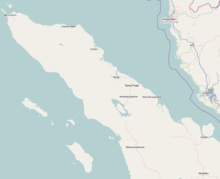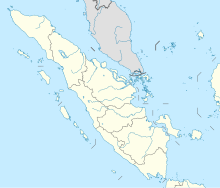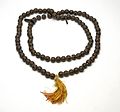
Aceh is the westernmost province of Indonesia. It is located on the northern end of Sumatra, with Banda Aceh being its capital and largest city. Granted a special autonomous status, Aceh is a religiously conservative territory and the only Indonesian province practicing Sharia law officially. There are ten indigenous ethnic groups in this region, the largest being the Acehnese people, accounting for approximately 80% to 90% of the region's population.

The Aceh War, also known as the Dutch War or the Infidel War (1873–1904), was an armed military conflict between the Sultanate of Aceh and the Kingdom of the Netherlands which was triggered by discussions between representatives of Aceh and the United States in Singapore during early 1873. The war was part of a series of conflicts in the late 19th century that consolidated Dutch rule over modern-day Indonesia.

Banda Aceh is the capital and largest city in the province of Aceh, Indonesia. It is located on the island of Sumatra and has an elevation of 35 meters. The city covers an area of 61.4 square kilometres and had a population of 223,446 people at the 2010 Census, rising to 250,227 at the 2015 Census; the latest official estimate is 268,148.

Great Aceh Regency is a regency of the Indonesian province of Aceh. The regency covers an area of 2,969 square kilometres and according to the 2010 census had a population of 351,418; the latest official estimate is 418,467. The Regency is located at the northwest tip of Sumatra island and surrounds the provincial capital of Banda Aceh. It includes a number of islands off the northern tip of Sumatra, which comprise Pulo Aceh district within the regency. The seat of the Regency government is the town of Jantho. The regency is divided into 23 districts with 618 villages.
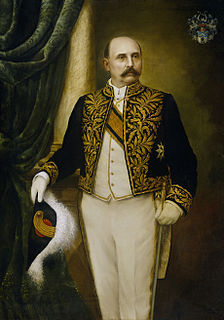
Joannes Benedictus van Heutsz was a Dutch military officer who was appointed governor general of the Dutch East Indies in 1904. He had become famous years before by bringing to an end to the long Aceh War.

The Tropenmuseum is an ethnographic museum located in Amsterdam, Netherlands, founded in 1864.

Lhokseumawe, is the second largest city in Aceh Special District, in the north of Sumatra, Indonesia. The city covers an area of 181.06 square kilometres, and had a population of 171,163 at the 2010 Census; the latest official estimate is 180,200. Being between Banda Aceh and the large southern city of Medan, the town is a key regional centre important for the economy of Aceh.

The National Museum of Indonesia, is an archeological, historical, ethnological, and geographical museum located in Jalan Medan Merdeka Barat, Central Jakarta, right on the west side of Merdeka Square. Popularly known as the Elephant Museum after the elephant statue in its forecourt. Its broad collections cover all of Indonesia's territory and almost all of its history. The museum has endeavoured to preserve Indonesia's heritage for two centuries.

Baiturrahman Grand Mosque is a Mosque located in the center of Banda Aceh city, Aceh Province, Indonesia. The Baiturrahman Grand Mosque is a symbol of religion, culture, spirit, strength, struggle and nationalism of the Acehnese people. The mosque is a landmark of Banda Aceh and has survived the 2004 Indian Ocean tsunami.
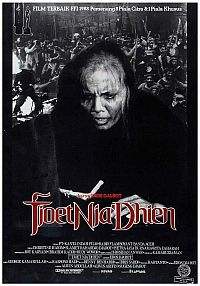
Tjoet Nja' Dhien is a 1988 Indonesian film directed by Eros Djarot and starring Piet Burnama, Christine Hakim, Rudy Wowor, and Slamet Rahardjo. Based on the life's story of female Acehnese guerrilla leader Cut Nyak Dhien, it focuses on the six-year period between her second husband, Teuku Umar's death and her capture by the Dutch colonial army. Tjoet Nja' Dhien was released to critical acclaim, winning 9 Citra Awards, and was screened at the Selection de la Semaine de la Critique in Cannes, 1989. It also became Indonesia's submission to the 62nd Academy Awards for the Academy Award for Best Foreign Language Film, but was not nominated.

The Acehnese language is an Austronesian language natively spoken by the Acehnese people in Aceh, Sumatra, Indonesia. This language is also spoken by Acehnese descendants in some parts of Malaysia like Yan, in Kedah.

The Acehnese are an ethnic group from Aceh, Indonesia on the northernmost tip of the island of Sumatra. The area has a history of political struggle against the Dutch. The vast majority of the Acehnese people are Muslims. The Acehnese people are also referred to by other names such as Lam Muri, Lambri, Akhir, Achin, Asji, A-tse and Atse. Their language, Acehnese, belongs to the Aceh–Chamic group of Malayo-Polynesian of the Austronesian language family.
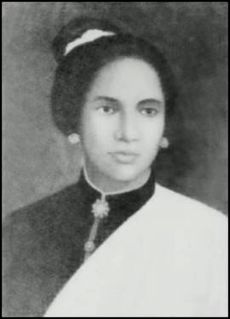
Cut Nyak Dhien or Tjoet Nja' Dhien was a leader of the Acehnese guerrilla forces during the Aceh War. Following the death of her husband Teuku Umar, she led guerrilla actions against the Dutch for 25 years. She was posthumously awarded the title of National Hero of Indonesia on May 2, 1964 by the Indonesian government.

The International Colonial and Export Exhibition was a colonial exhibition held in Amsterdam from May 1 to October 1, 1883. The event drew at least a million visitors and was the first international colonial exhibition, with 28 different nations presenting their colonial trade and wealth.
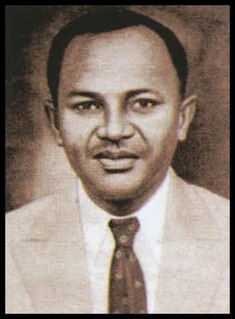
Teungku Nyak Arif was an Acehnese nationalist and National Hero of Indonesia. He has been given the nickname Rencong of Aceh, after the traditional Acehnese weapon, for his bravery.

The National Press Monument is a monument and museum to the national Indonesian press. Formally established in 1978, more than 20 years after it was first proposed, the monument is located in Surakarta, Central Java, and operated by the Ministry of Communications and Information. The complex consists of an old society building, which was constructed in 1918 and used for the first meeting of the Reporters Association of Indonesia, as well as several subsequent expansions; it is listed as a Cultural Property of Indonesia.

Sultan Alauddin Muhammad Da'ud Syah II was the thirty-fifth and last sultan of Aceh in northern Sumatra. He reigned from 1875 to 1903. Despite long lasting resistance his rule ended up being conquered by the Dutch colonial state.
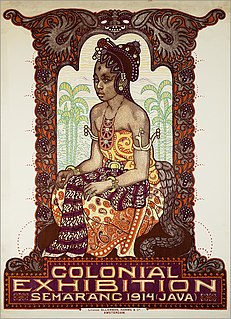
The Colonial Exhibition, Dutch: Koloniale Tentoonstelling, took place in Semarang, Dutch East Indies in from August 13 through November 15, 1914. Colonial exhibitions were trade expositions. It was designed to "give a comprehensive picture of the Dutch Indies in their present prosperous condition."

The Great Pustaha is a pustaha displayed in the Tropenmuseum of Amsterdam. The name refers to the largest pustaha which was kept in the museum. The official name for the pustaha is simply "pustaha", but for the purpose of distinction, the pustaha is called the Great Pustaha.


